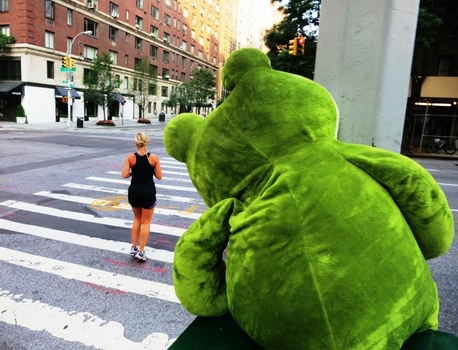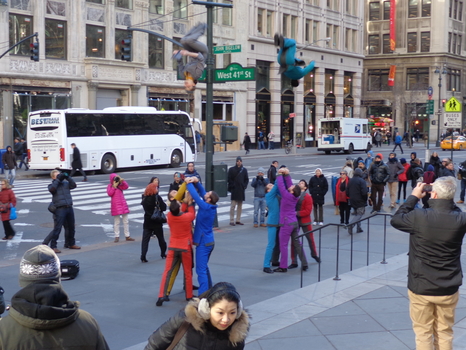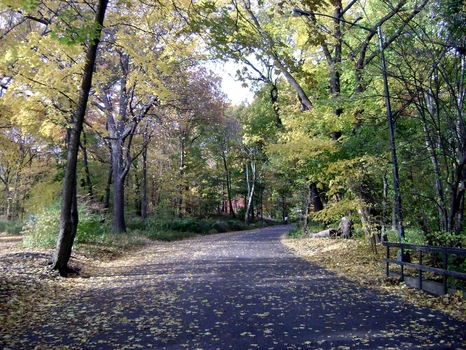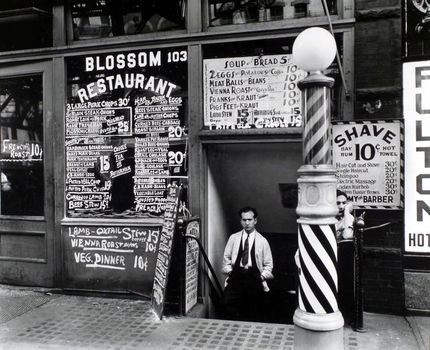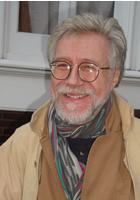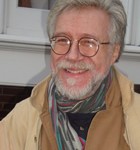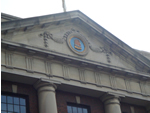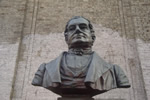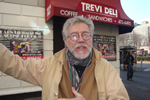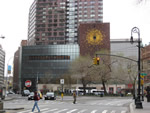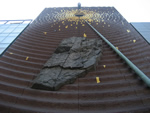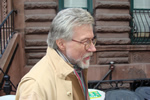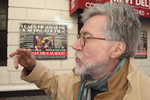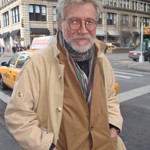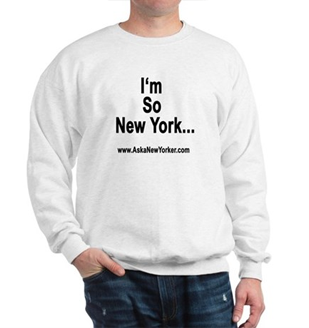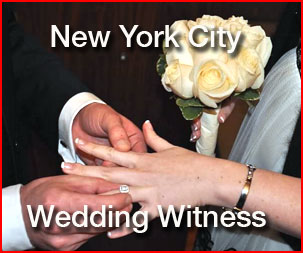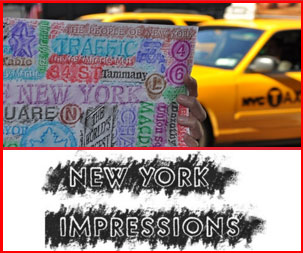Ask a New Yorker: As I was peering into this very interestingly decorated Irish
Victorian restaurant/bar called Lillie’s on 16th street between Broadway
and 5th Ave, scheduled to have opened several months earlier but somehow froze
in time (probably ran out of money), I got caught up in a conversation with
Robinson, who lives in the neighborhood. Next thing I know he was leading me
on a historical tour of Union Square and also sharing with me his interpretation
on a piece
of Public art called the Metronome
Ask a New Yorker: That’s strange how this place never opened.
Robinson: It looks like it should be on the lower east side.
Ask a New Yorker: I like your name, Robinson. We have something in common. Two
last names as first names.
Robinson: Lilienthal is my last name which means “lilies of the valley”.
It’s an old German Jewish name. It comes from, like all these German Jewish
names, from the napoleon census takers. The Jews in Europe did not have Christian
last names. They were Isaacs’s son, of Isaac, from the tribe of Benjamin.
There were no last names. So for census purposes Napoleon decided he wanted
to know how many people he had. So if you had money you could get a beautiful
last name like Rosenthal, Blumenthal, Goldberg or Lilienthal. If you didn’t
have money you got Schwartz…..now for the tour, we’re going to start
with the old Tammany Hall
building, right here on East 14th Street between 3rd Ave and Irving Place.
You see the liberty cap in the pediment,
the red cap with the gold fringe that’s what’s on top of the flagpole.
Ask a New Yorker: This is not the original Tammany Hall?
Robinson: Not the original but it’s the one that’s important because
Union Square was where all the political gatherings were held. Right there from
that podium, from that veranda is where the bosses and the politicians and the
labor leaders gave their speeches. This building was built in 1828. Now, notice
at the top above the entrance it says, “Freedom Our Rock”. Now you’ve
got to remember that. We have the Indian on the left, Columbus on the right
so they are trying to commemorate the Indians and Columbus into the society
of Tammany or Columbian order. There was a debate about which it was going to
be called. But the important point for my little tour here is the inscription
“Freedom Our Rock”.
We continue down Park Ave South to 14th street in front of the Virgin Atlantic
store.
Robinson: Now let’s move onto some art interpretation. So we have the
record. That was easy. Then we have this pole, the needle to play a record.
Ask a New Yorker: The artist was influenced by Virgin records?
Robinson: Yes! I suspect that they were. But it still didn’t make any
sense to me until I saw the hand. Whose hand is it? It’s George Washington’s
hand. This is called a rebus.
So the first layer of meaning, again we have a record, Virgin record. It use
to say Virgin Records, they now call it Virgin Mega Store. A record is something
you play music or play on. But it also means an historical record. The hole
with the smoke is the canons from the Civil War. The rock turns out to be; well
we built this city on Rock n roll. Virgin records, follow me, we built this
city on rock n roll. If you look at a geological map you go from the Battery
at the bottom to Fort Tyron at the top. That is the granite schist
pattern that underlies Manhattan. You can see exactly where the rivers flow.
But it’s also from Tammany Hall we built, “Freedom Our Rock”.
Rock n roll….Virgin records. So the hand of Washington was the tip off.
When I saw that hand I realized it was the hand of Washington on the statue
across the street. I realized that this was supposed to represent back the images
of Union Square. It’s a secular benediction. It’s not a fascist
salute.
Ask a New Yorker: Robinson, you’re on fire! So what do you really think
of this piece of public art, The Metronome?
Robinson: Well, if public art doesn’t work fairly immediately then it’s
a failure. It really should be immediately recognizable on some initial level
for anyone who sees it. It may have deeper level subsequently like any great
work of art. If it doesn’t catch on some level of meaning for just about
everybody that sees it and if it takes in my case weeks and months to decipher
it, it’s a failure as public art. It’s not a complete failure of
a work of public art but it takes too much effort and too many people are not
going to appreciate it. They’ll look t it but since there’s incomprehension
they’ll keep walking.
Ask a New Yorker: Keep it going Robinson. What else?
Robinson: Union, as in a place where two streets meet, in this case uptown and
downtown avenues. So the original Union
square is a place where Broadway and Park Ave South met. Then after the
Civil War they said, “Ooh Union… Lincoln fought the Civil war not
to free the slaves but to preserve the Union”. So there were the Union
forces and the rebel forces. So after the victory in 1864-65 every town in the
North built Union Square Station and a Union Square. Then the next stage is
that the labor Unions, all of their headquarters, almost every major Union had
a head quarter around this square. There are still a few of the buildings left.
Every May Day Parade started here. This is probably the most political spot
in all of New York City in terms of citizenship and participation. After 9-11
we all came here. Union Square is ultimately a symbolic cemetery commemorating
the dead in the Civil War.
Ask a New Yorker: Who are you Robinson and what do you do?
Robinson: I teach Philosophy at Rutgers University. I also teach ethics stuff,
I do engineering ethics, and I do business ethics, biomedical ethics. I’m
a closet sculptor, that’s why I got interested in this, in the sculpting
thing. I’m a widower. My late wife passed away a few feet down below here.
So after her death in 89, I got very interested in Union Square and did a lot
of research on it.
Ask a New Yorker: What would be something your mother might say to you as a
kid?
Robinson: She would say that you can drop me anywhere in the world where there
are people and within 24 hrs I would have a friend, a job and a place to live.
I think that’s true. I think I am that kind of person.
Ask a New Yorker: Last question. How many books do you own?
Robinson: When I moved to New York I worked in book stores. That was one of
my part time jobs. So I always had an employees discount. So in the space of
about ten years of graduate school, plus the books I had for college. I’d
say around 5,000 books Philosophy, literature, art, history, religion and a
lot of stuff on the Greeks. For me these books are not investments or collector’s
items or captured beast in a zoo. These are tools that I underline and annotate.
I come up with my own table of contents.
Ask a New Yorker: Thank you Robinson for your time.
PS: A few days passed and I went back to investigate Lillie’s, and to
my surprise a gentleman opened the door. I introduced myself and he happened
to be the owner. Lillie’s will open in two weeks….should be by the
first week in March.


